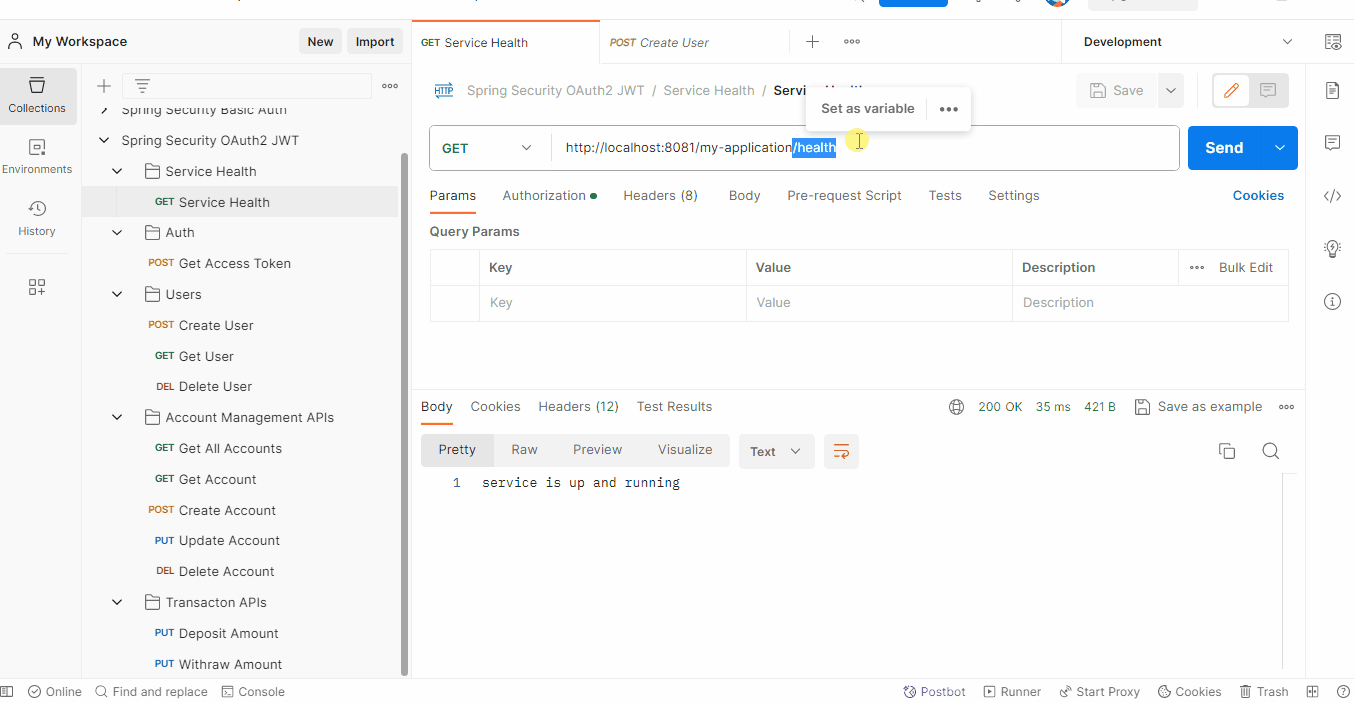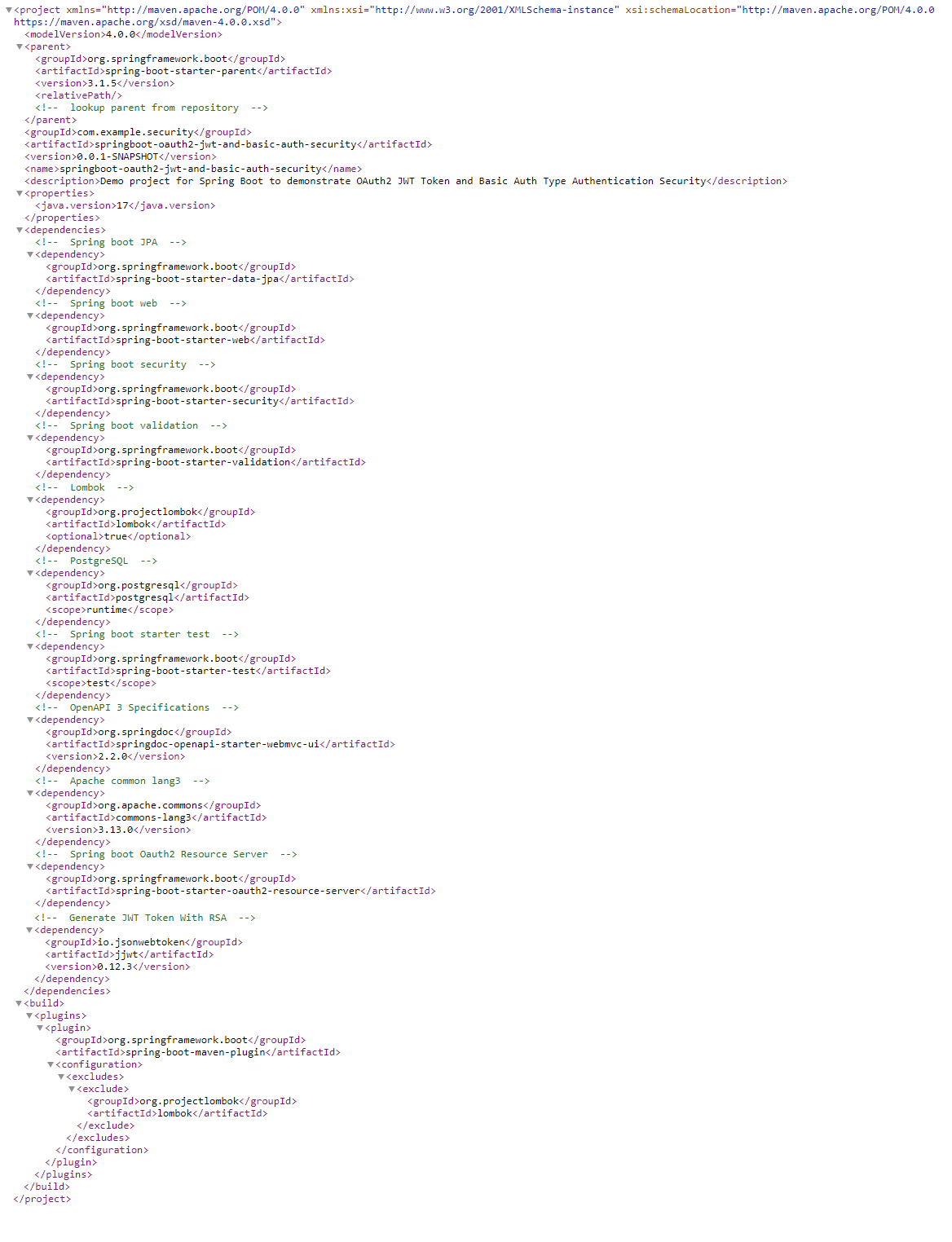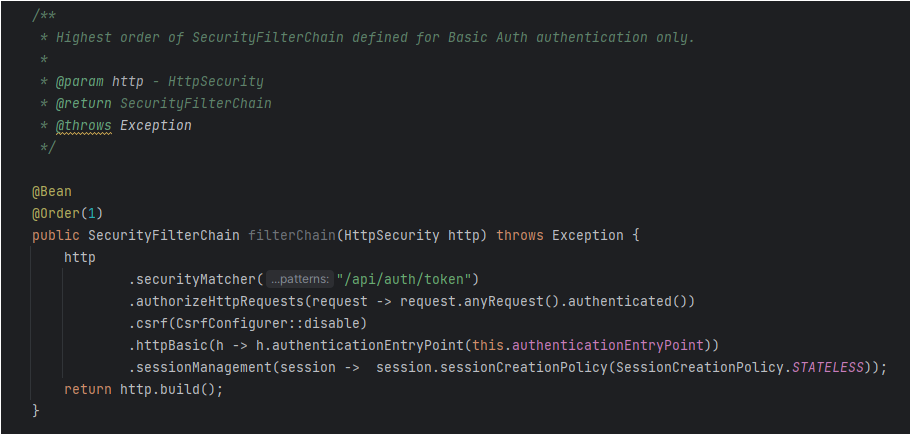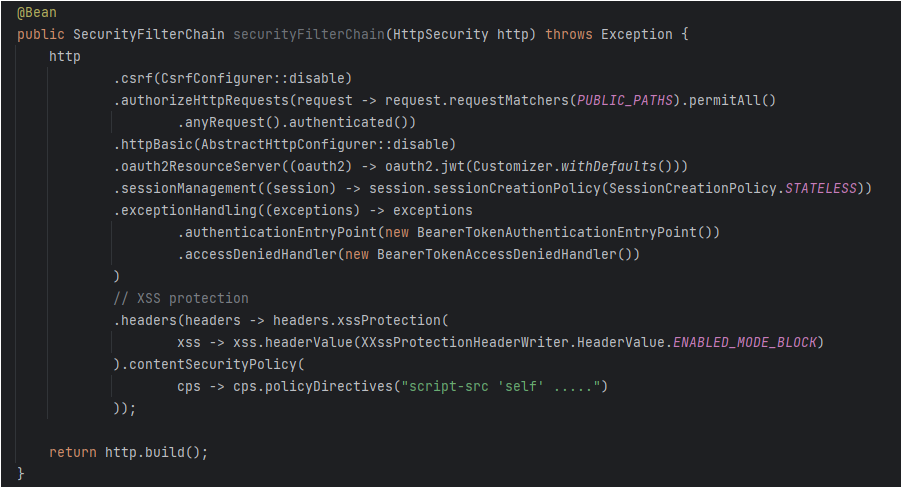Application demonstrates how to configure multiple HttpSecurity instances in Spring Security to secure one API with basic authentication and all other APIs with OAuth2 JWT authentication.
- User signup API with 'No Auth' as authentication type
- Get access token (OAuth2 JWT) with 'Basic Auth' (Username and Password) authentication type.
- Use access token to access all other APIs
-
Firstly, presenting an access token to a server for authentication is part of the Oauth2 standard. Hence, we are going to implement a small part of the Oauth2 spec and not necessarily implement the entire oauth2 specification.
-
Secondly, Spring Security has in-built support for the OAuth2 Resource server and BearerTokenAuthenticationFilter to parse the request for bearer tokens and make an authentication attempt. Therefore, we don’t need to implement our own custom filters.
-
Thirdly, Jwt and Opaque Token are the only supported formats for bearer tokens in Spring Security. This application
configures OAuth2 resource server with Jwt-encoded bearer token support.
- User Registration (No Auth)
- New user registration without API authentication
- Get Access Token (Basic Auth)
- User Management (Bearer Token)
- Get all users
- Delete a user
- Account Management (Bearer Token)
- Get all accounts
- Get an account
- Create new account
- Update existing account
- Delete existing account
- Transaction Management (Bearer Token)
- Deposit an amount to an account
- Withdraw an amount from an account
OAuth 2.0 is the industry-standard protocol for authorization and it uses Access Tokens for that.
Firstly, an OAuth Access Token is a string that the OAuth client uses to make requests to the resource server. Secondly, access tokens do not have to be in any particular format, and in practice, various OAuth servers have chosen many different formats for their access tokens. Most importantly, access tokens may be either “bearer tokens” or “sender-constrained” tokens.
Bearer Tokens are the predominant type of access token used with OAuth 2.0. A Bearer Token is an opaque string, not intended to have any meaning to clients using it. Some servers will issue tokens that are a short string of hexadecimal characters, while others may use structured tokens such as JSON Web Tokens.
JSON Web Token (JWT, RFC 7519) is a way to encode claims in a JSON document that is then signed. JWTs can be used as OAuth 2.0 Bearer Tokens to encode all relevant parts of an access token into the access token itself instead of having to store them in a database.
A server that protects the user’s resources and receives access requests from the Client. It accepts and validates an Access Token from the Client and returns the appropriate resources to it.
This application has implemented JWT authentication with Spring Security 6:
- Generate private & public key pairs for signing/verifying the token.
- Configure Spring Security to enable OAuth 2.0 Resource Server with JWT bearer token support
- Define JwtEncoder & JwtDecoder beans for token generation and verification
- Expose a POST API with mapping /signup. On passing the user details in the request body without authentication, the new user will be registered.
- Expose a POST API with mapping /token. On passing the username and password in the request body, it will generate a JSON Web Token (JWT).
- Using this JWT token, access all other API with Bearer Token as authentication type
- Java version: 17.0.8, vendor: Oracle Corporation
- Apache Maven 3.2.3
- Spring boot 3.1.5
- PostgreSql Database
- Spring boot JPA
- Spring security 6.1.5 (Implemented Basic Auth in this project)
- Lombok
- OpenApi 3 Specifications
For generating keys, OpenSSL has been used.
- Generate an RSA private key, of size 2048, and output it to a file named key.pem:
- Generate a public RSA key with the private key as input and output it to a file named public.pem:
Configuration class which implements the Spring security for both Basic Auth and Bearer Token.
- Basic Auth security for generating the access token using username and password
- Makes use of the RSA keys that we have generated earlier to define the JwtEncoder & JwtDecoder beans, defines SecurityFilterChain bean for securing the private APIs with the OAuth2 Resource server.
PostgreSQL has been used in this project. Also, this project stores account's events in the form of JSON in JSONB column in the application table.
JSON data types are for storing JSON (JavaScript Object Notation) data. Such data can also be stored as text, but the JSON data types have the advantage of enforcing that each stored value is valid according to the JSON rules. There are also assorted JSON-specific functions and operators available for data stored in these data types.
PostgreSQL offers two types for storing JSON data:
- JSON
- JSONB.
- JSON stores white space, and that is why we can see spaces when key "a" is stored, while JSONB does not.
- JSON stores all the values of a key. This is the reason you can see multiple values (2 and 1) against the key "a", while JSONB only "stores" the last value.
- JSON maintains the order in which elements are inserted, while JSONB maintains the "sorted" order.
- JSONB objects are stored as a decompressed binary as opposed to "raw data" in JSON, where no reparsing of data is required during retrieval.
- JSONB also supports indexing, which can be a significant advantage.
-
Path
-
Swagger Authorization
- Swagger UI Details
We can disable OpenAPI swagger for any environment based upon profiles. We can supply a VM argument '-Dspring.profiles.active=' to the application configurations. Using spring profile annotation @Profile("prod"), we can control the display of swagger.
- VM Argument
If the value of spring profile is 'prod', then swagger won't be available. Please refer the below screenshot:






